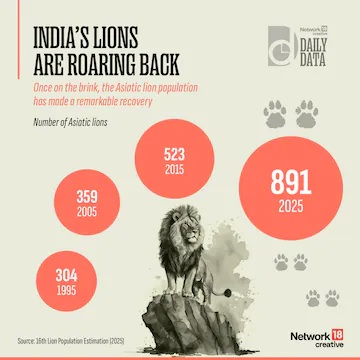SPICED Scheme
- 22 May 2025
In News:
The Spices Board of India, under the Ministry of Commerce and Industry, has introduced the SPICED Scheme (Sustainability in Spice Sector through Progressive, Innovative and Collaborative Interventions for Export Development) for the financial year 2025–26.
Key Objectives
The SPICED initiative is designed to:
- Promote sustainability and innovation in spice farming.
- Enhance productivity and quality of major spices like small and large cardamom.
- Encourage organic cultivation, GI-tagged spice production, and value addition.
- Improve post-harvest processing standards.
- Ensure compliance with international food safety and phytosanitary regulations.
- Strengthen the export ecosystem and support spice stakeholders, including farmers, SHGs, and MSMEs.
Major Components and Interventions
The scheme extends financial assistance and capacity-building support across the spice value chain, including:
1. Agricultural Support
- Rejuvenation and replanting of cardamom plantations.
- Development of water sources and micro-irrigation systems.
- Promotion of organic farming and Good Agricultural Practices (GAPs).
2. Post-Harvest Infrastructure
- Installation of modern processing machinery such as dryers, dehullers, slicers, and grading systems.
- Assistance to farmers and Farmer Producer Organizations (FPOs) for acquiring spice-specific equipment like:
- Turmeric boilers
- Spice polishers
- Mint distillation units
- Threshers
3. Entrepreneurship and Innovation
- Establishment of Spice Incubation Centres to promote product development and branding.
- Support for startups and MSMEs in accessing markets and improving competitiveness.
4. Capacity Building
- Training and extension activities to disseminate knowledge on best practices and technical know-how.
- Skill enhancement for Self-Help Groups (SHGs), farmers, and FPOs.
5. Export Promotion
- Facilitation of participation in international trade fairs, buyer-seller meets, and market linkage events.
- Financial aid prioritised for:
- First-time exporters
- Small and medium enterprises (SMEs)
- Registered exporters with a valid CRES (Certificate of Registration as Exporter of Spices).
Governance and Transparency
- All scheme activities will be geo-tagged.
- Status of applications, fund allocation, and beneficiary details will be made available on the Spices Board's website to ensure transparency and accountability.
INSV Kaundinya

- 22 May 2025
In News:
The Indian Navy formally inducted and named an ‘ancient stitched sail ship’ as the INSV Kaundinya at a ceremonial event held at the Naval Base in Karwar. INSV Kaundinya has been built based on a 5th century ship depicted in paintings seen in the Ajanta Caves.
What is INSV Kaundinya?
The INSV Kaundinya is a reconstructed ancient stitched ship, modeled after maritime imagery found in the Ajanta Cave murals. It represents India’s historical naval engineering capabilities and cultural exchanges across the Indian Ocean.
Construction and Origins
- The project was initiated in July 2023 as a collaborative effort between the Ministry of Culture, the Indian Navy, and Hodi Innovations.
- The ship was built using traditional stitched shipbuilding methods, where wooden planks are lashed with coir ropes and coconut fibre, sealed with natural resin—a method that avoids the use of nails or metal fasteners.
- The design took inspiration from 5th-century depictions in the Ajanta caves, interpreted through archaeological analysis, hydrodynamics, and naval architecture, as no original ship designs from that era have survived.
Planned Expedition
- INSV Kaundinya is slated to retrace an ancient maritime trade route in 2025, sailing from Gujarat to Oman, highlighting India's historical seafaring ties with West Asia.
Cultural Symbolism
- The ship’s sails are embellished with traditional motifs such as the Gandabherunda (a two-headed mythical eagle) and Sun iconography, symbolizing resilience and energy.
- A SimhaYali (lion-dragon hybrid) figure adorns the bow, a nod to Dravidian maritime symbolism.
- The deck features a Harappan-style stone anchor, linking the vessel to India’s ancient Indus Valley maritime practices.
- Named after Kaundinya, an ancient Indian voyager known for establishing early trade and cultural links with Southeast Asia, the ship reflects India's historic role in transoceanic interaction.
Ajanta Cave Paintings: Artistic Reference
- Located in Maharashtra, the Ajanta Caves date from the 2nd century BCE to the 6th century CE, renowned for some of the oldest surviving Indian mural art.
- These murals use the tempera technique—painting on dry plaster with natural dyes such as red ochre and black.
- They largely portray Buddhist narratives, including Jataka Tales, and scenes from the Buddha’s life, interwoven with nature and decorative elements.
- The paintings emphasize emotional expression, spiritual depth, and distinctive anatomical stylization.
Mizoram Becomes India’s First Fully Literate State
- 22 May 2025
In News:
Mizoram has officially become India’s first fully literate state, attaining a literacy rate of 98.2% according to the Periodic Labour Force Survey (PLFS) 2023–24. This achievement surpasses the 95% threshold defined by the Ministry of Education to classify a region as fully literate.
Definition of Literacy
- As per the Office of the Registrar General of India, a literate person is someone aged 7 years or above who can read and write with understanding in any language.
- Under NEP 2020 and in alignment with SDG 4.6, the definition has expanded to include the ability to read, write, and compute with comprehension, and includes digital and financial literacy and critical life skills.
India’s Literacy Landscape (2023–24)
- National Literacy Rate: 80.9% (age 7+)
- Mizoram: 98.2% (Highest; now declared fully literate)
- Ladakh: First UT to achieve full functional literacy under ULLAS
- Lowest Literacy Rates: Andhra Pradesh (72.6%), Bihar (74.3%)
ULLAS – Nav Bharat SaakshartaKaryakram
The achievement is attributed to the ULLAS (Understanding Lifelong Learning for All in Society)programme, a centrally sponsored scheme running from 2022 to 2027, aligned with the National Education Policy (NEP) 2020.
Key Features:
- Target Group: Adults aged 15 years and above who missed formal education.
- Implementation: Based on volunteerism and the principle of Kartavya Bodh (sense of duty).
- Components:
- Foundational Literacy and Numeracy
- Critical Life Skills (including digital, legal, financial literacy)
- Basic Education
- Vocational Skills Development
- Continuing Education
- Assessment: Foundational Literacy and Numeracy Assessment Test (FLNAT) is conducted periodically for certification.
- Digital Tools: Resources provided through the DIKSHA platform and the ULLAS mobile/web portal in regional languages.
What is Functional Literacy?
Functional literacy refers to an individual's ability to apply reading, writing, and numeracy in daily tasks, enabling personal development and community participation.
Other Key Educational Initiatives
- PM SHRI Schools
- Sarva Shiksha Abhiyan
- PRAGYATA (Digital Education)
- Mid-Day Meal Scheme
- BetiBachaoBetiPadhao
- National Programme on Technology Enhanced Learning (NPTEL)
Asiatic Lion Census 2025

- 22 May 2025
In News:
According to the 16th Asiatic Lion Census (2025) conducted by the Gujarat Forest Department, the Asiatic lion (Panthera leopersica) population has grown from 674 in 2020 to 891 in 2025, marking a 32.2% increase in five years.
Key Highlights:
- Core Areas (Protected Forests & Sanctuaries): 384 lions
- Non-Forest Areas: 507 lions (up from 340 in 2020)
- 44.22% of the total population now lives outside traditional protected zones.
- Gir National Park, along with Gir Wildlife Sanctuary and Pania Wildlife Sanctuary, holds 394 lions—the core population.
- Amreli district leads with 257 lions, while Mitiyala Wildlife Sanctuary has seen its count double to 32.
- Barda Wildlife Sanctuary near Porbandar recorded 17 lions, marking a population return since 1879.
- New satellite populations identified near Jetpur and Babra-Jasdan.
- Adult Females: 330 recorded—a 27% increase since 2020, indicating strong reproductive potential.
Census Methodology
The 2025 census employed direct beat verification, a statistically rigorous method:
- The landscape was divided into zones and sub-zones.
- Personnel included officials, enumerators, supervisors, and volunteers.
- Unlike the tiger census (which spans 2 years), the lion census was completed in just 3 days.
Project Lion (Launched in 2020)
Aimed at ensuring the long-term conservation of Asiatic lions, Project Lion focuses on:
- Habitat restoration
- Strengthening the prey base
- Human-wildlife conflict mitigation
- Monitoring via advanced technology, including:
- Radio-collars
- Camera traps
- Global Positioning System (GPS) tracking
- GIS-based real-time surveillance
- AI-driven tools likeSIMBA, e-GujForest, andAlert Generation System
- Automated sensor grids (magnetic, motion, infrared)
Habitat and Legal Status
- Natural Habitat: Grasslands, open woodlands, savannas, and scrublands.
- Main Range: Gir Forests in Gujarat; Barda Wildlife Sanctuary emerging as a second habitat.
- Legal Protection:
- Schedule I and IV of the Wildlife (Protection) Act, 1972
- Appendix I of CITES
- IUCN Status: Vulnerable
Distinctive Traits
- Smaller in size compared to African lions.
- Males have a moderate mane allowing visible ears.
- A distinct belly fold—rare in African lions.
- No fixed breeding season.
Global Conservation Context
India is a founding member of the International Big Cats Alliance (IBCA), launched in 2023 to enhance global cooperation on big cat conservation, including lions.
Additionally, the IUCN’s Green Status of Species (2025) introduced a recovery-based conservation framework. Lions are currently classified as "Largely Depleted", highlighting the need for sustained and collaborative conservation actions.
e-Zero FIR System
- 22 May 2025
IN News:
In a significant stride toward modernizing cybercrime response mechanisms, Union Home Minister Amit Shah unveiled the e-Zero FIR system. This initiative ensures that complaints involving financial cyber frauds exceeding ?10 lakh—submitted via the 1930 helpline or the National Cybercrime Reporting Portal (NCRP)—are automatically registered as FIRs, eliminating the need for the complainant to visit a police station.
Objective and Operational Rollout
The project, developed under the guidance of the Indian Cyber Crime Coordination Centre (I4C), is aimed at accelerating the registration and investigation of high-value cybercrime cases.
- Pilot Implementation: Initiated in Delhi as a testbed.
- National Expansion: Plans are underway to replicate the model across India.
Concept of Zero FIR
The Zero FIR mechanism permits the filing of an FIR at any police station, regardless of the location of the offence. This removes jurisdictional constraints and ensures prompt registration of cases.
- Legal Backing: Incorporated under Section 173 of the BharatiyaNagarik Suraksha Sanhita (BNSS), 2023.
- Historical Context: Introduced following recommendations from the Justice Verma Committee post the 2012 Nirbhaya case, to address delays caused by jurisdictional rigidities.
Salient Features of Zero FIR
- No Jurisdictional Restrictions: Victims may file complaints at any police station or via electronic means.
- Initial Registration: The complaint is logged as a Zero FIR and then forwarded to the relevant jurisdictional police unit for investigation.
- Primary Goal: To facilitate timely intervention and prevent procedural delays for the complainant.
Integration with National Digital Systems
To enhance responsiveness and coordination, the e-Zero FIR system integrates with several key digital platforms:
- NCRP (National Cybercrime Reporting Portal) – Administered by I4C.
- Delhi Police’s e-FIR mechanism
- Crime and Criminal Tracking Network and Systems (CCTNS) – Maintained by theNational Crime Records Bureau (NCRB).
This digital infrastructure enables real-time complaint registration at Delhi’s e-Crime Police Station, which then redirects the FIR to the appropriate jurisdiction.
Alignment with New Criminal Legislation
The initiative is fully aligned with India’s revised criminal justice framework effective from July 1, 2024, which includes:
- Bharatiya Nyaya Sanhita (BNS), 2023
- BharatiyaNagarik Suraksha Sanhita (BNSS), 2023
- BharatiyaSakshyaAdhiniyam (BSA), 2023
Under the BNSS provisions:
- Mandatory Zero FIR registration under Section 173.
- Victim must visit a cybercrime police station within 72 hours to convert a Zero FIR into a formal FIR.
- Free copy of FIR to be provided to the complainant, ensuring transparency and empowering victims.
Vision for a Cyber-Secure India
The launch of the e-Zero FIR system underscores the government’s resolve to build a secure and digitally empowered India by:
- Ensuring easy and immediate access to justice for victims of cyber fraud.
- Facilitating quick action by investigative agencies without procedural bottlenecks.
- Strengthening citizen trust through digital governance and victim-friendly policing.
